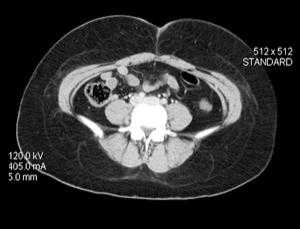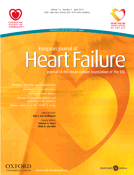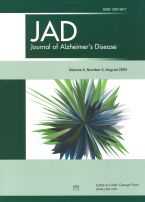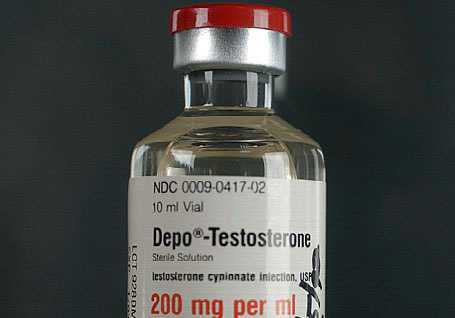PNAS:科学家发现新的免疫防御酶
2012-04-10 Beyond 生物谷
中性粒细胞是组成免疫系统的重要一部分。当病原菌侵入我们身体时,中性粒细胞都会在第一时间赶赴感染现场,通过信号分子调集其他免疫细胞从而保护我们机体。为此,中性粒细胞释放丝氨酸蛋白酶,激活信号分子。近日,Martinsried的马克斯·普朗克神经生物学研究所的科学家们发现一种新的丝氨酸蛋白酶:中性粒细胞丝氨酸蛋白酶4,或NSP4。这种酶为治疗免疫系统疾病如类风湿关节炎等提供一个新治疗策略。 免疫系统
中性粒细胞是组成免疫系统的重要一部分。当病原菌侵入我们身体时,中性粒细胞都会在第一时间赶赴感染现场,通过信号分子调集其他免疫细胞从而保护我们机体。为此,中性粒细胞释放丝氨酸蛋白酶,激活信号分子。近日,Martinsried的马克斯·普朗克神经生物学研究所的科学家们发现一种新的丝氨酸蛋白酶:中性粒细胞丝氨酸蛋白酶4,或NSP4。这种酶为治疗免疫系统疾病如类风湿关节炎等提供一个新治疗策略。
免疫系统的运作是基于多种细胞以及调解因子之间相互作用。例如,中性粒细胞(一类白血细胞)应对细菌的反应就是释放丝氨酸蛋白酶。这些酶能能激活信号分子如趋化因子。激活的信号分子会引导其他免疫细胞一起消灭病原体。
Martinsried的马克斯·普朗克神经生物学研究所Dieter Jenne领导的研究小组发现了以前未知的蛋白酶:中性粒细胞丝氨酸蛋白酶4或NSP4。Dieter Jenne说:这种酶的特别之处在于它有一个特定的氨基酸精氨酸。这是NSP4与其他三个已知的中性粒细胞丝氨酸蛋白酶的不同之处,虽然NSP4有类似的分子结构,但有不同的识别基序。科学家也许能够利用这种差异来开发能抑制NSP4,从而降低免疫反应的活性物质。
丝氨酸蛋白酶是一个蛋白酶家族,它们的作用是断裂大分子蛋白质中的肽键,使之成为小分子蛋白质。其激活是通过活性中心一组氨基酸残基变化实现的,它们之中一定有一个是丝氨酸(其名字的由来)。在哺乳类动物里面,丝氨酸蛋白酶扮演着很重要的角色,特别是在消化,凝血和补体系统方面。
Dieter Jenne表示到目前为止,我们还不知道NSP4的底物,但我们假设它的底物必须是信号分子。活化趋化因子可以招募大量中性粒细胞,其庞大的数量足以造成组织损伤。蛋白酶有时作为促进剂,甚至可以完全独立引发慢性炎症。科学家解释:如果我们下调这种防御能力,我们可以抵消上述现象。
Dieter Jenne说“在进化史上,NSP4的是最古老的四大中性粒细胞丝氨酸蛋白酶之一。利用基因测序技术,科学家已经证明NSP4几乎没有改变过”。
如果要开发以蛋白NSP4为治疗靶标的消炎药,科学家们现在必须审查NSP4在生物体中的功能,并考察阻止这种酶是否会有不利的影响。科学家正在与诺华公司正合作在小鼠动物模型上开展研究以期回答上述这些问题。Dieter Jenne说:要想NSP4的抑制剂用于慢性关节炎或炎症性皮肤病等疾病的患者,首先我们就要测试这些抑制剂的长期影响。

doi:10.1073/pnas.1200470109
PMC:
PMID:
NSP4, an elastase-related protease in human neutrophils with arginine specificity
Natascha C. Pereraa, Oliver Schillingb, Heike Kittela, Walter Backc, Elisabeth Kremmerd, and Dieter E. Jennea,1
Neutrophil serine proteases (NSPs) in cytoplasmic granules of neutrophils are regarded as important antimicrobial defense weapons after engulfment and exposure of pathogens to the content of primary granules. Despite intensive studies on neutrophils during the last three decades, only three active serine proteases, neutrophil elastase (NE), cathepsin G (CG), and proteinase 3 (PR3) have been identified in these short-lived cells. Here, we report on the identification of a fourth serine protease (NSP4) with 39% identity to NE and PR3, but arginine specificity, yet sharing features like propeptide processing by dipeptidyl peptidase I, storage, and release as an active enzyme with the three active proteases. We established monoclonal antibodies against NSP4, excluded cross-reactivity to human granzymes, NE, CG, PR3, and azurocidin, and screened for NSP4 protein expression in various human tissues and blood leukocyte populations. Only granulocyte precursors and neutrophil populations from peripheral blood were positive. The content of NSP4 in neutrophil lysates, however, was about 20-fold lower compared with CG. Upon neutrophil activation, NSP4 was released into the supernatant. Profiling its specificity with peptide libraries from Escherichia coli revealed a preference for arginine in P1; it cleaved Tyr-Arg-Phe-Arg-AMC and Ala-Pro-Nva-thiobenzyl esters. NSP4 was inhibited by α1-proteinase inhibitor (α1–antitrypsin), C1 inhibitor, and most efficiently by antithrombin-heparin, but not by elafin, secretory leukocyte protease inhibitor, α1–antichymotrypsin, and monocyte-neutrophil elastase inhibitor. Functional specialization and preferred natural substrates of NSP4 remain to be determined to understand the biological interplay of all four NSPs during neutrophil responses.
本网站所有内容来源注明为“梅斯医学”或“MedSci原创”的文字、图片和音视频资料,版权均属于梅斯医学所有。非经授权,任何媒体、网站或个人不得转载,授权转载时须注明来源为“梅斯医学”。其它来源的文章系转载文章,或“梅斯号”自媒体发布的文章,仅系出于传递更多信息之目的,本站仅负责审核内容合规,其内容不代表本站立场,本站不负责内容的准确性和版权。如果存在侵权、或不希望被转载的媒体或个人可与我们联系,我们将立即进行删除处理。
在此留言














#PNAS#
70
#科学家发现#
68